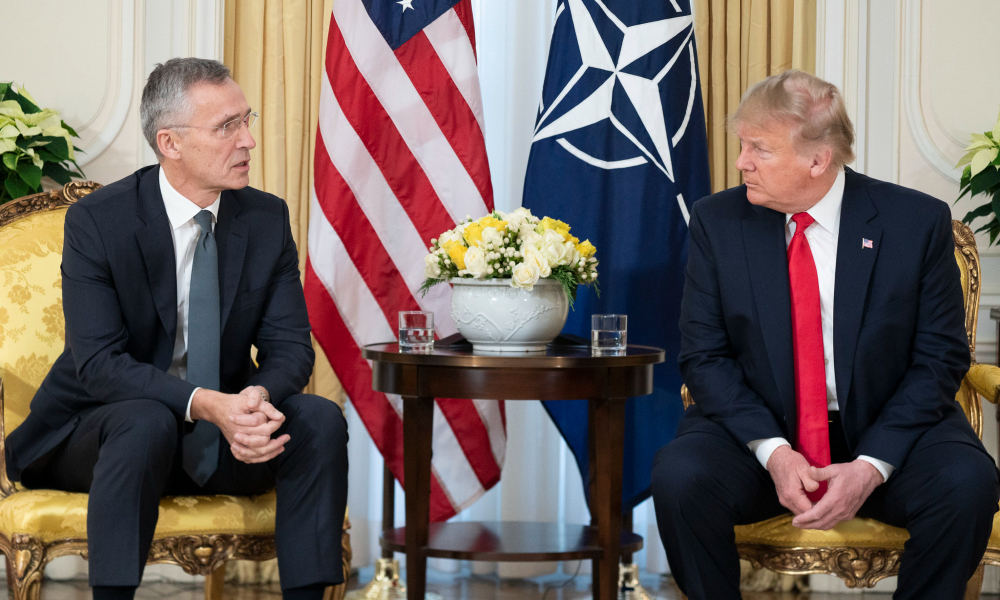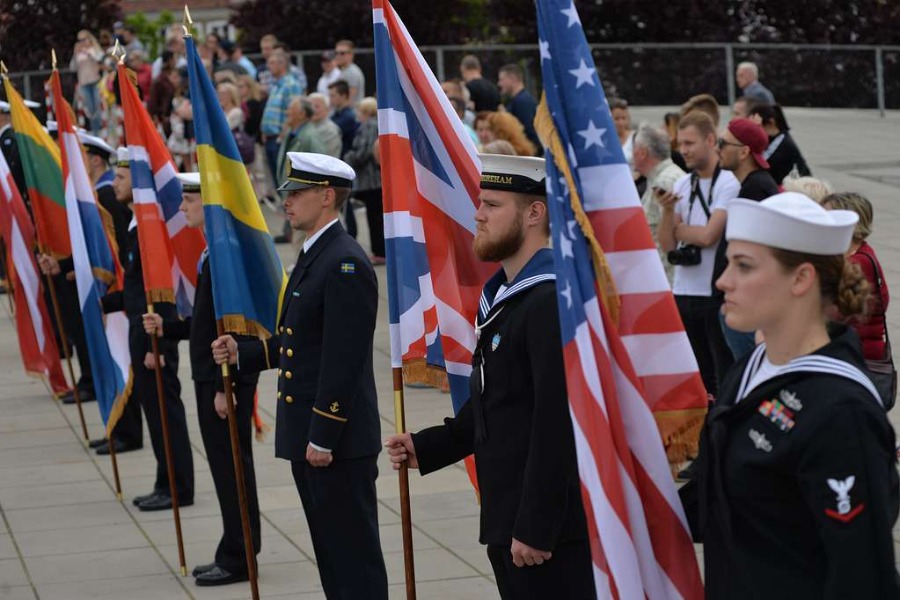Trump Can’t Withdraw From NATO, but He Could “Quiet Quit”

Published by The Lawfare Institute
in Cooperation With

Editor’s Note: NATO is at the center of the U.S. foreign policy debate, with critics such as former President Trump criticizing many of its members for not paying their own way and free riding off the United States. My Center for Strategic and International Studies colleague Kathleen McInnis argues that this critique misses that much of NATO’s role goes beyond its important function as an aggregator of U.S. and European allied militaries, and that “quiet quitting” the organization would be a grave mistake.
Daniel Byman
***
As the November 2024 election looms, policymakers and observers focused on transatlantic security are not-so-quietly asking what will happen to the North Atlantic Treaty Organization if Trump wins. That former President Trump is skeptical of NATO is no secret. After lambasting the allies over insufficient defense spending, he attempted to reposition U.S. military forces in Europe to locations outside of Germany and even flirted with the idea of withdrawing the United States from NATO altogether. Some potential advisers have argued that it is Asia, not Europe, that matters for U.S. security. If elected to a second term, it is unlikely that Trump will suddenly gain a favorable view of the NATO alliance.
Would this matter? Some observers maintain that NATO will be a fact of life that all future administrations will have to live with, in particular because of legislation enacted in the National Defense Authorization Act that restricts a president’s ability to unilaterally withdraw from alliances without congressional consent. Lawfare’s own Scott Anderson has deftly detailed the provisions contained within that legislation—and their limitations. But the formal exits from the alliance have been barricaded; so far, so good.
The problem is that there are all sorts of ways to “quiet quit”—that is, keep the U.S. flag flying over NATO headquarters but not really do much to lead the alliance. Fundamentally, U.S. administrations do not have to work with NATO to accomplish its objectives. We don’t want to outline a playbook here for how leaders could abrogate treaty intent without formal withdrawal, but the bottom line is that administrations can simply not show up. They can choose to use other mechanisms, such as bilateral relationships, to pursue their foreign and national security policy aims.
It has happened before. Frustrations with the NATO alliance micromanaging the Kosovo air campaign led then-Secretary of Defense Donald Rumsfeld to pursue U.S. military objectives in Afghanistan and Iraq through “coalitions of the willing.” Nor is the United States the only country to quiet quit on multilateral military affairs. The track record in most coalition operations is dotted with examples of countries doing all sorts of things to remain engaged on paper but minimizing their risk levels and operational footprint in practice. Canada, for example, ended its high-risk mission in Kandahar after the first decade of the war in Afghanistan; it replaced its combat forces with a garrisoned police training mission in Kabul until 2014, when it completed its combat operation. In Operation Iraqi Freedom, Japan went to considerable lengths over time to minimize its operational risk, including shifting from providing a Reconstruction and Support Group in Samawah province to providing air bridge support, without abandoning its mission altogether.
What explains these prior examples of quiet quitting—finding ways to phone it in rather than leave the mission, or the alliance, altogether? The fact of the matter is that states join coalitions for all sorts of reasons that do not have to do with immediate threats. Countries like Australia, Japan, and South Korea joined the United States in Iraq less because they agreed about the threat Saddam Hussein posed and more because they wanted to underscore their support for their relationship with the United States. As the war in Afghanistan dragged on, some countries—such as the Netherlands and Canada—contributed forces and resources to Afghanistan to underscore their support for their partnerships with the United States and to undergird the NATO alliance itself. The political dynamics of these alliances had a significant bearing on national choices to join coalitions. The priority placed on bolstering these alliance relationships also served as a counterweight to at-times vociferous domestic political arguments for withdrawal from those coalitions.
NATO is not a mere vehicle for capability aggregation. If the allies agreed on threats and had similar priorities regarding what to do about them, force posture in Europe, for example, would probably look quite different. But, as the saying goes, where you sit is where you stand. The national security worldview in Rome—which has to contend with illegal migration and other spillover effects from instability in Africa—is quite different from the one in Warsaw, which is on the front lines with Russia.
Rather, NATO has grown into a space where the world’s democracies bring together their respective challenges and work together on the world’s most difficult problems. Returning to the case of Afghanistan, countries that contributed to the mission in Afghanistan—especially after 2005—did so less because of the threat the Taliban posed and more because NATO was leading the operation. NATO is a cornerstone of many countries’ security policies, and they rely on the alliance on a wide variety of issues. On account of these other lines of cooperation, countries viewed supporting NATO on the ground as a vital strategic interest.
This leads to another, somewhat indirect, point. The debate over “burden-sharing”—that is, which countries are spending more than 2 percent of their gross domestic product on their defense programs—is becoming a political poison pill. Although several NATO members should spend more on their militaries, force capability aggregation is not NATO’s main purpose. Rather, NATO’s purpose today is coordination, consultation, and consensus-building on a huge swathe of strategic challenges. Focusing on defense spending—which, by the way, constitutes only a narrow slice of allied national security spending—creates the political risk that the alliance will be evaluated in narrow cost-sharing terms. NATO has a political utility that cannot be counted in dollars or euros spent.
Sure, a future administration could throw its hands up in the air because the allies don’t spend enough on defense and quiet quit NATO. But if NATO is not important to the United States, why would it be important to any other member? If allies no longer believe in the legitimacy of U.S. leadership, why would they choose to support U.S. international policy objectives? This is why even critics of NATO should think twice about undermining the alliance. Looking forward, if the United States wants international support in a conflict with China or Iran—or any degree of international policy coherence on issues from space to missile defense to Russian expansionism—building that consensus will be far more difficult without NATO and alliances like it.
NATO’s value should be self-evident. Just look at how important it has been for meeting the challenge that Russia’s aggressive foreign policy poses to Europe. Defense spending is important, too, but NATO’s purpose is about more than what each country can contribute. The reason there has been a response at all is because the allies, led by the United States, have agreed to defend their democracies together. Future administrations should realize how precious that is.




